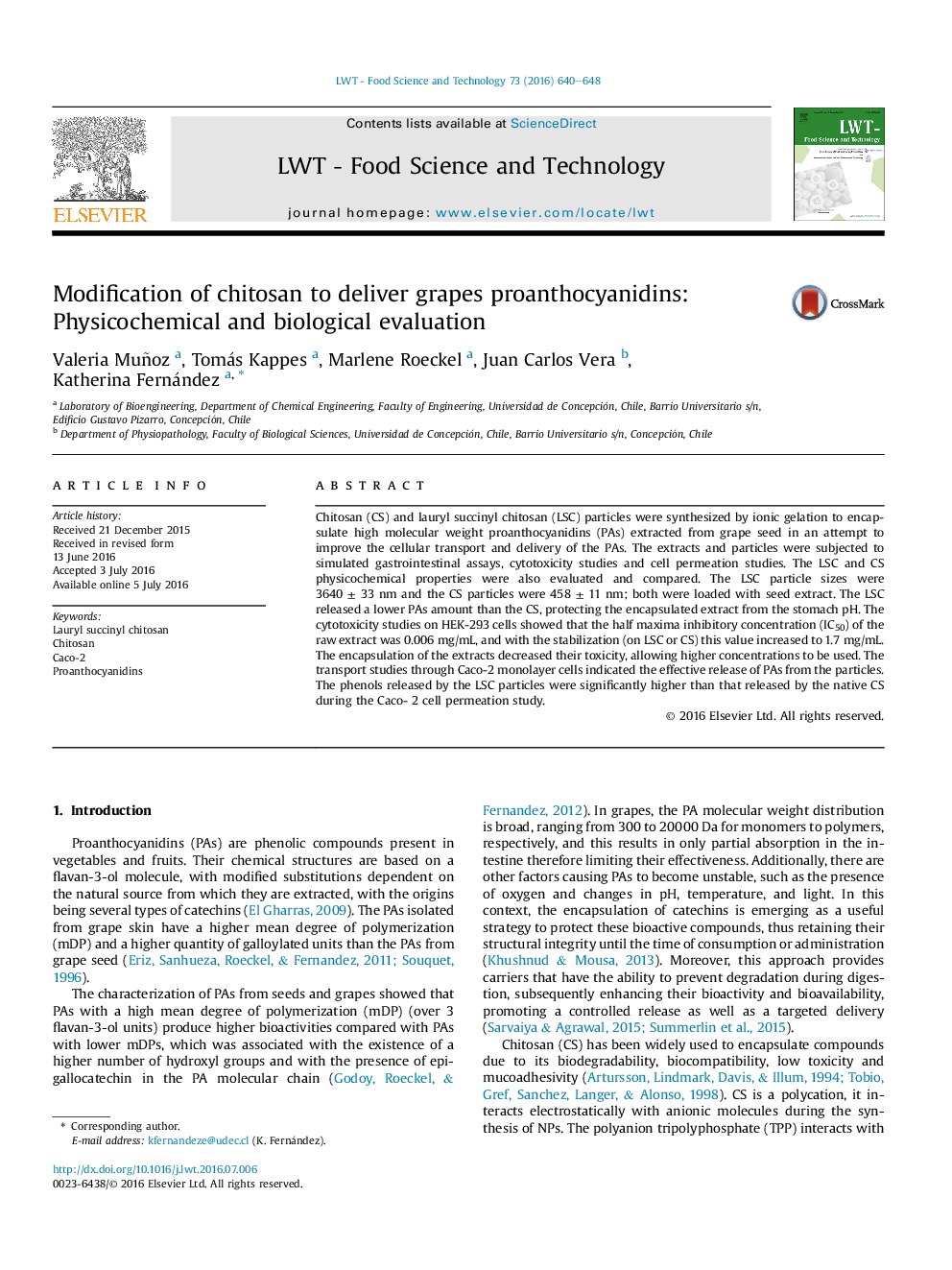| Article ID | Journal | Published Year | Pages | File Type |
|---|---|---|---|---|
| 4563406 | LWT - Food Science and Technology | 2016 | 9 Pages |
•Chitosan and lauryl succinyl chitosan particles were synthesized by ionic gelation.•Encapsulation of high molecular weight proanthocyanidins was carried out.•The delivery and the cellular transport of the proanthocyanidins were improved.•The encapsulation of the extracts decreased their toxicity, increasing the doses.
Chitosan (CS) and lauryl succinyl chitosan (LSC) particles were synthesized by ionic gelation to encapsulate high molecular weight proanthocyanidins (PAs) extracted from grape seed in an attempt to improve the cellular transport and delivery of the PAs. The extracts and particles were subjected to simulated gastrointestinal assays, cytotoxicity studies and cell permeation studies. The LSC and CS physicochemical properties were also evaluated and compared. The LSC particle sizes were 3640 ± 33 nm and the CS particles were 458 ± 11 nm; both were loaded with seed extract. The LSC released a lower PAs amount than the CS, protecting the encapsulated extract from the stomach pH. The cytotoxicity studies on HEK-293 cells showed that the half maxima inhibitory concentration (IC50) of the raw extract was 0.006 mg/mL, and with the stabilization (on LSC or CS) this value increased to 1.7 mg/mL. The encapsulation of the extracts decreased their toxicity, allowing higher concentrations to be used. The transport studies through Caco-2 monolayer cells indicated the effective release of PAs from the particles. The phenols released by the LSC particles were significantly higher than that released by the native CS during the Caco- 2 cell permeation study.
